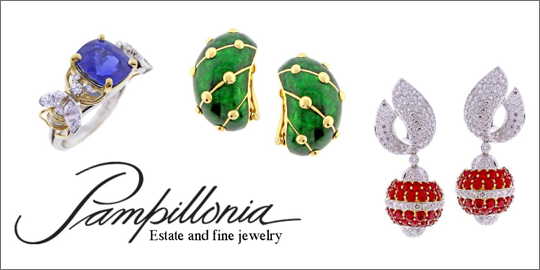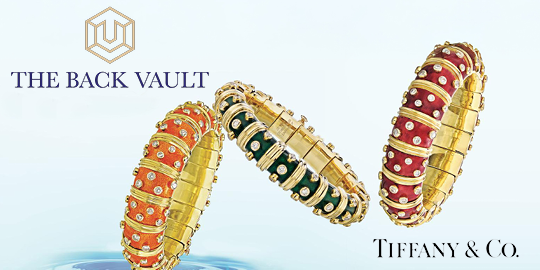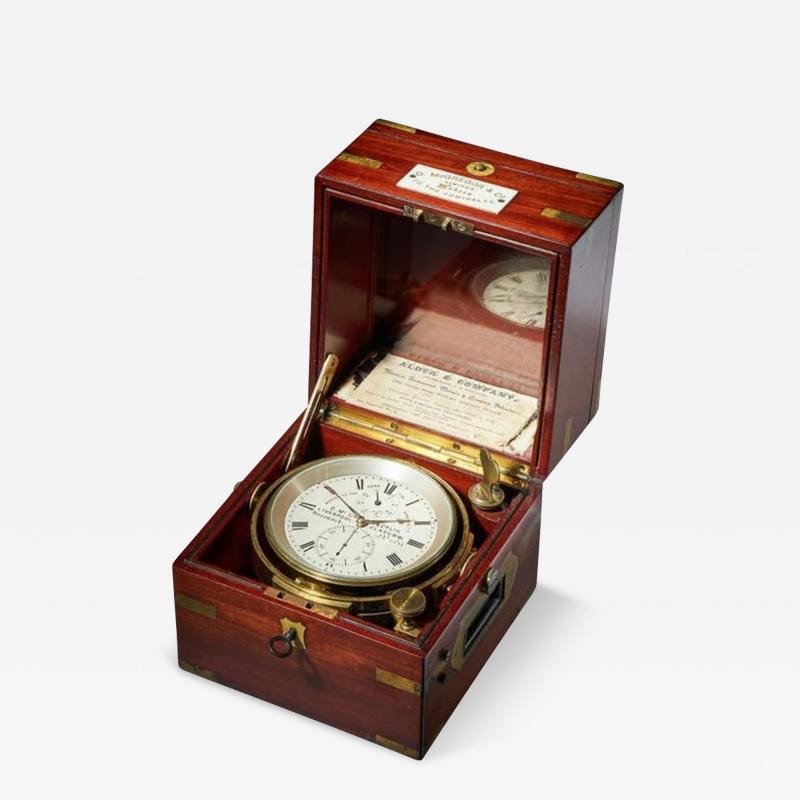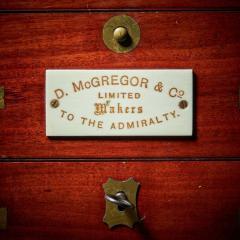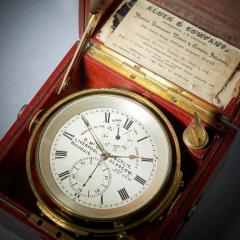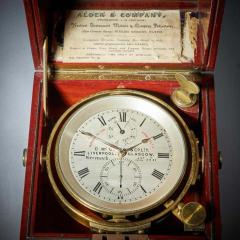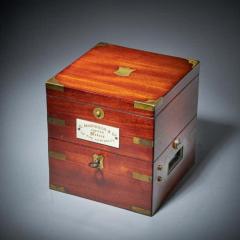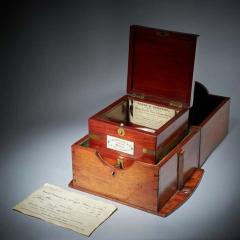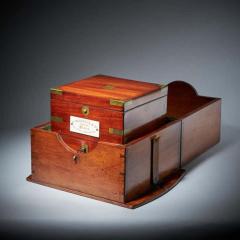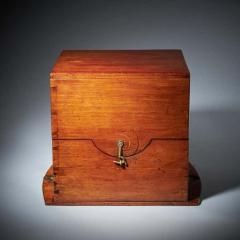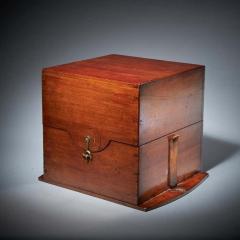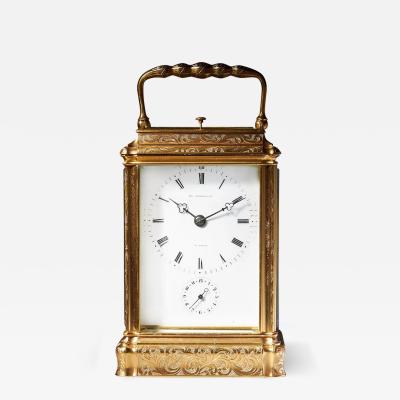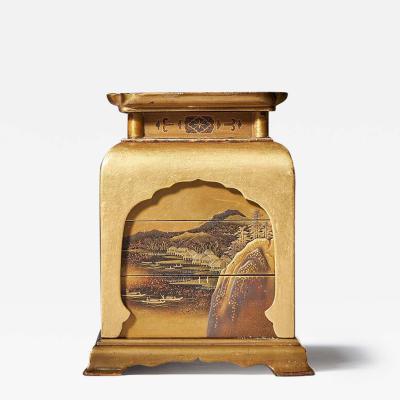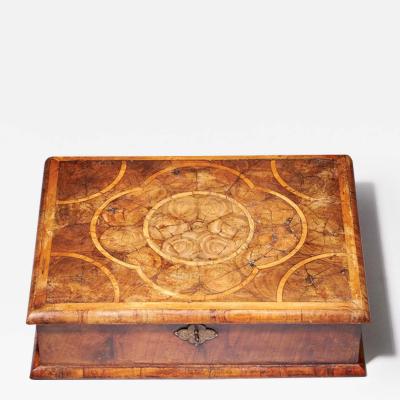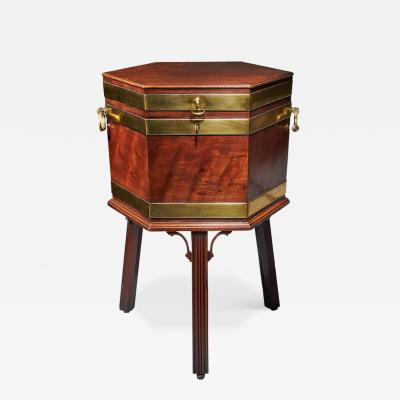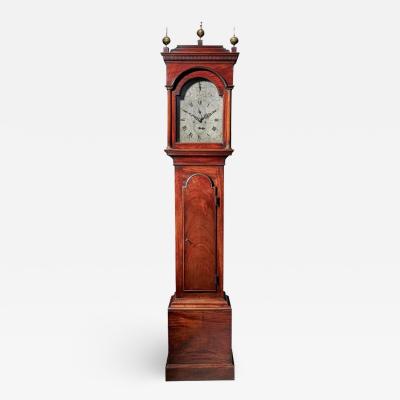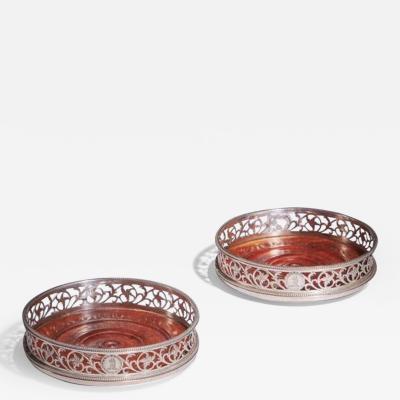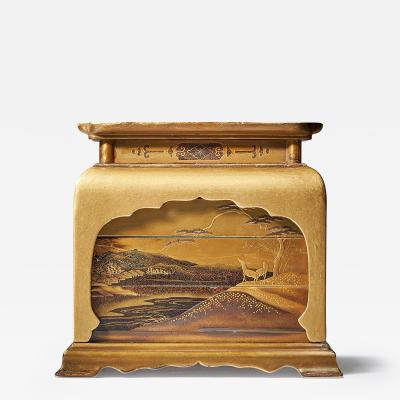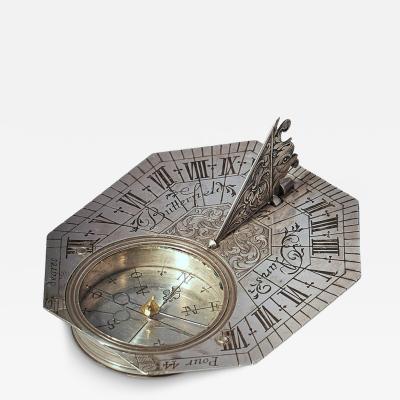Fine Scottish Two-Day Marine Chronometer Signed and Numbered D. McGregor.
-
Description
A Fine Scottish Two-Day Marine Chronometer Signed and Numbered D. McGregor Glasgow No 2241, c. 1870
A classic beautifully produced 19th century Scottish chronometer in a three-tier mahogany case, made c. 1870. The typically constructed case consists of a lower and a glazed upper part, as well as a top lid. The lower part has two counter-sunk handles to the sides, while the front has a lock and key with an inlaid brass escutcheon. In the front of the upper part there is a brass button to lock the top lid. The movement is situated in a gimballed brass bowl, which can be secured for transport purposes by a turnable handle in the bottom right corner of the case. The 4" silvered dial is protected by a flat bevelled glass set in a brass bezel, screwed to the bowl. In addition, there is an original protective case, in which the chronometer can be placed to protect it from external hazards.
The maker has signed and numbered the chronometer on the silvered dial in the following manner:
D. McGregor & CO LTD
LIVERPOOL Glasgow
Greenock No 2241
The time is indicated by a fine pair of gilt brass hands on the silvered dial with a Roman chaptering, five-minute and minute divisions.
The seconds are indicated by a blued-steel hand on a separate chapter ring below the middle with Arabic ten-second, five-second and second divisions. Below the XII is up-and-down dial 0 - 56 (hours), indicating the state of winding.
The two-day duration movement is constructed between two circular engine-turned plates and is driven by a spring in a spring barrel via a chain fusee. It has a so-called Earnshaw spring detent escapement with a compensated balance and helical spring. The chronometer is wound by a special key with a ratchet to prevent winding the clock in the wrong direction. The key can be stored in a hole in the top right corner of the case. The winding hole is covered by a sprung shutter.
Dimensions: 18x18x18cm
The maker:
Duncan McGregor started his business in Greenock in 1836, opened premises in Glasgow in 1844 and traded as D. McGregor & Co. from 1856 onwards. Branches were opened in Liverpool in 1879 and London in 1886. They advertised themselves as manufacturers of nautical, mathematical and optical instruments, chronometers and watches. They often made use of famous chronometer makers such as Kulberg and Mercer.
Literature: Tony Mercer, Chronometer Makers of the World, p. 195
Jonathan Betts, Marine Chronometers at Greenwich, Oxford, 2017
£6500.00 -
More Information
Origin: Scotland Period: 19th Century Condition: Good. Wear consistent with age and use. Fantastic condition throughout, in perfect order. Creation Date: 1850 Number of Pieces: 2-3 Styles / Movements: Traditional, Victorian Incollect Reference #: 696273 -
Dimensions
W. 7.09 in; H. 7.09 in; D. 7.09 in; W. 18 cm; H. 18 cm; D. 18 cm;
Message from Seller:
Alexander George Fine Antique Furniture, based in rural Oxfordshire, specializes in exceptional 17th- and 18th-century English furniture from renowned cabinet-makers like Thomas Chippendale, Coxed & Woster, and Gerrit Jensen. With a focus on authenticity, provenance, and expert conservation, we serve collectors worldwide with trust and integrity. Contact: +44 1367 243304 | sue.austin@alexandergeorgeantiques.com |









